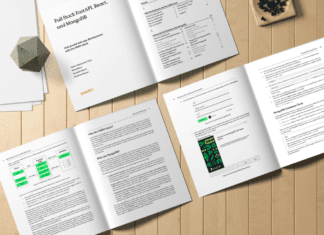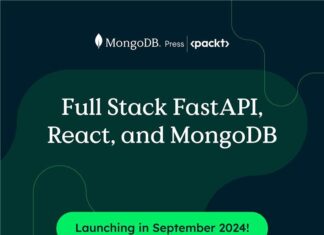In today’s tech-driven world, artificial intelligence (AI) is no longer a futuristic concept but an essential tool that powers innovations across industries. From healthcare to finance, AI is transforming how businesses operate, make decisions, and deliver value to customers. The book Building AI-Intensive Python Applications: Create intelligent apps with LLMs and vector databases is designed to guide developers, both beginners and experts, in harnessing the power of AI using Python—a language known for its simplicity, flexibility, and an extensive ecosystem of AI tools.
Whether you’re a seasoned developer or just starting your journey in AI, this book provides the tools, knowledge, and practical insights to build robust, scalable AI solutions. Here’s a closer look at what makes Building AI-Intensive Python Applications a must-have resource for anyone looking to excel in AI development.

Why Python and AI?
Python has emerged as the go-to language for AI and machine learning development, thanks to its clean syntax and vast ecosystem of libraries. Some of the most widely-used AI libraries—such as TensorFlow, PyTorch, and Scikit-learn—are built in Python, allowing developers to easily create everything from basic machine learning models to cutting-edge deep learning architectures.
The book leverages Python’s strengths and guides developers through the AI lifecycle, from data processing and model building to deployment and scaling. Whether you’re building an AI system to analyze customer data, predict market trends, or optimize business processes, Python’s versatility enables you to deliver powerful AI solutions.
What Will You Learn?
The expert-authored guide offers a step-by-step approach to mastering AI development. Here’s a glimpse of what you’ll learn:
1. Data Processing and preparation: The book covers data preprocessing essentials using Pandas and NumPy, helping you clean and prepare data for AI models. You’ll learn practical techniques for handling missing data and feature engineering.
2. Building and training AI models: It guides you through creating machine learning models with Scikit-learn, TensorFlow, and PyTorch. Hands-on tutorials cover key tasks like classification, regression, computer vision, and natural language processing (NLP).
3. AI model optimization: To ensure accuracy and efficiency, learn to fine-tune models for better performance using hyperparameter optimization and tools like GridSearchCV.
4. Deploying AI models: The book shows how to deploy models with Flask and FastAPI, handling real-time data and scaling for production environments.
5. AI in the real world: Explore real-world AI applications across industries like healthcare and finance, gaining insights into how AI transforms workflows and solves critical problems.
As AI continues to revolutionize industries, staying equipped with the right skills is crucial. This guide not only enhances your technical capabilities but also provides insights into how AI can be applied strategically within your organization or projects.
If you’re ready to take your AI development to the next level, grab your copy today and start building the future of AI!









